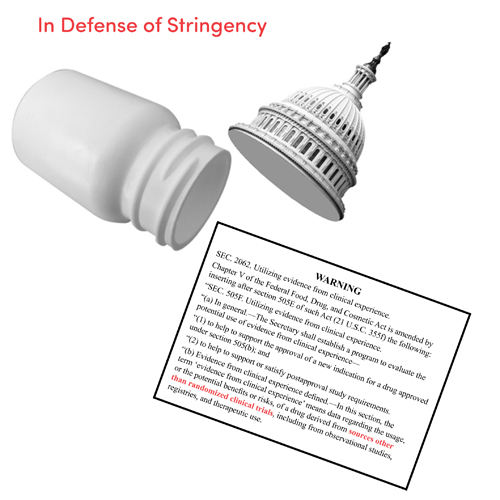 By Tim Horn
By Tim Horn
In response to growing public concern with health risks posed by approved drugs, a 2006 landmark report by the Institute of Medicine (IOM) argued that the U.S. Food and Drug Administration (FDA) lacks the unambiguous authority necessary to ensure the safety and efficacy of the country’s medicinal products. The IOM emphatically recommended that Congress enact any legislation necessary to buttress the agency’s enforcement powers so that it may apply the strengths of the pre-approval process, including stringent data review, to postapproval monitoring and regulation.
Nine years later, Congress and federal courts have followed a markedly different course. Instead of ensuring agency leadership and resources, they have continued assaults on the FDA’s regulatory powers—eroding not only its postapproval oversight, but also the safety and efficacy requirements for its approval of drugs and medical devices.
Consider the recent spate of court decisions aimed at the FDA’s regulation of off-label promotion. At stake is the legality of pharmaceutical companies’ promoting their products for uses not approved by the FDA. Most recently, in August 2015, the Southern District of New York in Amarin Pharma, Inc. v. FDA ruled that manufacturers may legally engage in highly subjective “truthful” and “non-misleading” off-label promotional communications under the First Amendment.
Then there is the 21st Century Cures Act, approved by the House of Representatives in July and currently awaiting action by the Senate. Beneath the luster of a five-year $8.75 billion promise to the National Institutes of Health and $550 million to the FDA to accelerate the delivery of new treatments and cures is a hornets’ nest of harmful legislation. Included are regulatory changes that would potentially undermine the FDA’s requirement for robust safety and efficacy data before allowing new drugs and medical devices to enter the market. (See “The 21st Century Cures Act’s ‘Pathway to Crisis’ in Drug Safety”).
The 21st Century Cures Act is political subterfuge. Proponents of the legislation argue that the FDA’s stringent regulatory requirements delay access to promising therapies and pose too great a financial risk for research and development, particularly among small manufacturers focusing on low-prevalence or currently incurable diseases. But there are already numerous regulatory pathways in place, including compassionate use/expanded access programs, the accelerated approval mechanism, and breakthrough therapy designations to expedite the availability of medicines meeting basic safety and preliminary efficacy requirements. (See “The FDA’s Concession Conundrum”)
What is needed is unflinching support of the FDA to collaborate with researchers, industry, and affected communities on surrogate and clinical outcomes for clinical trials with risk or registrational potential (see “The Challenge of Defining HIV Remission”), to efficiently shepherd promising drugs and medical devices down one of several approval pathways and, importantly, to ensure that a product’s safety and claims of efficacy are fully supported by scientific data.
Regulatory challenges don’t end in the United States. As highlighted in two additional pieces in this issue of TAGline—“Improving Regulatory Systems to Address Global TB Drug Access Failures,” and “PrEP: The Pathway to Global Access”—strengthening of national agencies to facilitate access to lifesaving treatment and to quickly and effectively mitigate safety concerns as they arise is an international priority.
AIDS treatment activism is, perhaps, best known for helping pave the way for expeditious and expanded access to therapies showing promise in early clinical trials. The despair we faced in the early years of HIV isn’t a distant memory, but rather a cornerstone on which our responses to the epidemic continue to be built. This includes the continued push for novel therapeutics that embody not only hope, but the research necessary to ensure their safety and effectiveness.•
